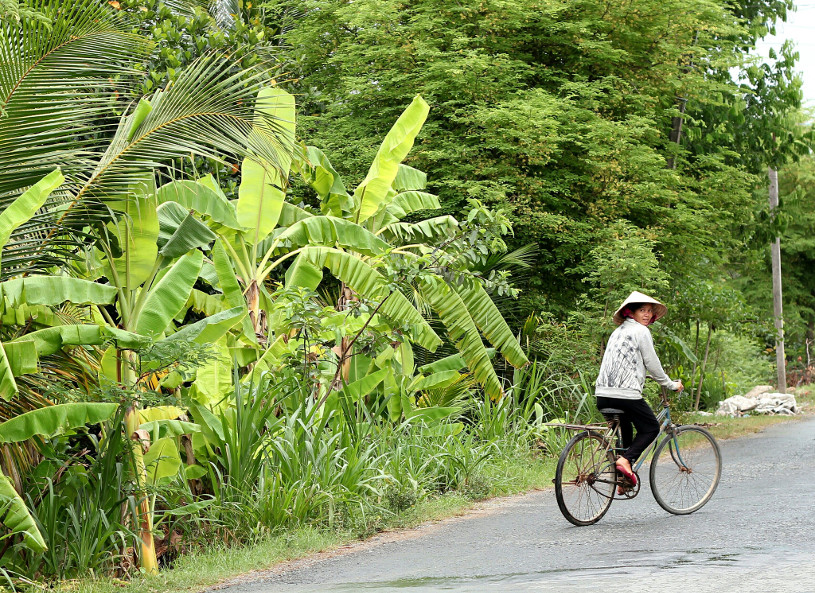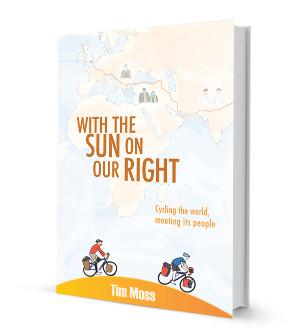
After two years of focussed work, I have recently finished writing my second book: With the Sun on Our Right.
It has been a greater ordeal than my first book. That is partly because of the nature of the book. My first was a practical guide, with seven distinct topics, each broken down into bites-size chunks. As such, although it required lots of painstaking research, it was essential a fill-in-the-blanks exercise.
This book is a story – an account of a 16-month cycling trip – and thus I started with a blank canvas. How do you know where to start? What to include and what to exclude? What other people will find interesting/entertaining? How best to articulate any given anecdote?
That made the project more daunting, more overwhelming, and it also meant that it took far longer to edit (writing took about 18-months and a further year to edit).
The other key reason that this book was so much harder to complete was that I had to fit it around a full-time job. When I wrote my first book, I was self-employed in the expedition industry, so I could justifiably spend entire days and weeks writing an expedition guidebook. Now, I have a nine-til-five office job, which has nothing to do with expeditions (and is by no means restricted to the hours between 9am and 5pm).
I’ve written about this aspect before: how I set myself a weekly goal of 4-6 hours’ writing every week, which I squeezed into lunch-breaks and evenings, and had a friend check on my progress every Sunday evening. Maintaining that discipline for two years was satisfying but tiring, efficient but trying.
It also taught me a lot about the writing process. Next time I write a book, these are the things I will remind myself:
- Use Google Docs or other online software. By having your book online, you can work on it anywhere, on different computers. It also avoids the farce of version control, making sure you’re working on the latest copy. (N.B. I switched to Word at the very end, when it came to formatting for printing).
- Use the ‘Outline’ feature: organising your book into headings, sub-headings and normal text. It makes it infinitely easier to navigate and move stuff around. When it comes to getting it ready for printing, it will also make it easier to update the formatting without having to select large chunks of text in one go.
- Back up regularly. Obviously this avoids the risk of losing hours/weeks of work, but it also gives you a chance to retrieve something you changed/deleted earlier. (If you’re using Google Docs, it automatically saves restorable back-ups).
- Delete, delete, delete. It’s your baby and you put hours of your life into every chapter, but you can’t fit everything in and you’ll have a poorer book if you try. Trim it down.
- If you delete whole sections then save them in a separate document and they might come in handy elsewhere. For me, I’ve used them as ‘deleted scenes’, which are included in the bonus material.
- Get input from other people. It’s really hard working in a vacuum, and even though you might not like what you hear, it’s probably better to hear it before it’s too late.
- Don’t take anyone’s advice too seriously. Most writing advice is subjective and different people have different opinions.
- Put it down for a couple of weeks and then come back to it. It’s hard to see the wood for the trees sometimes, but taking a step back and coming back with fresh eyes can really help.
- Give some thought to whether traditional publishing or self-publishing are best for you. I’ve explained why I self-published this time here.
- Don’t get writing advice from a part-time adventurer who happens to have written a book. Read the blogs of authors and writers.
My book was published yesterday and is now available to order here.
[box type=”custom” radius=”2″ border=”#b2b2b2″]
With the Sun on Our Right
Now available to order!
[one_third]

[/one_third]
[two_third_last]
The full story of Tim and Laura’s 13,000-mile round-the-world cycle
320 pages plus 16 more of colour photographs
[one_half]
[button color=”gray” link=”http://thenextchallenge.org/books/sun/” size=”bigger” align=”center”]Read more[/button]
[/one_half]
[one_half_last]
[button color=”green” link=”http://thenextchallenge.org/books/sun#buy” size=”bigger” align=”center”]Order Now ➜[/button]
[/one_half_last]
[/two_third_last]
[/box]
What do you think? Please do add your thoughts below…